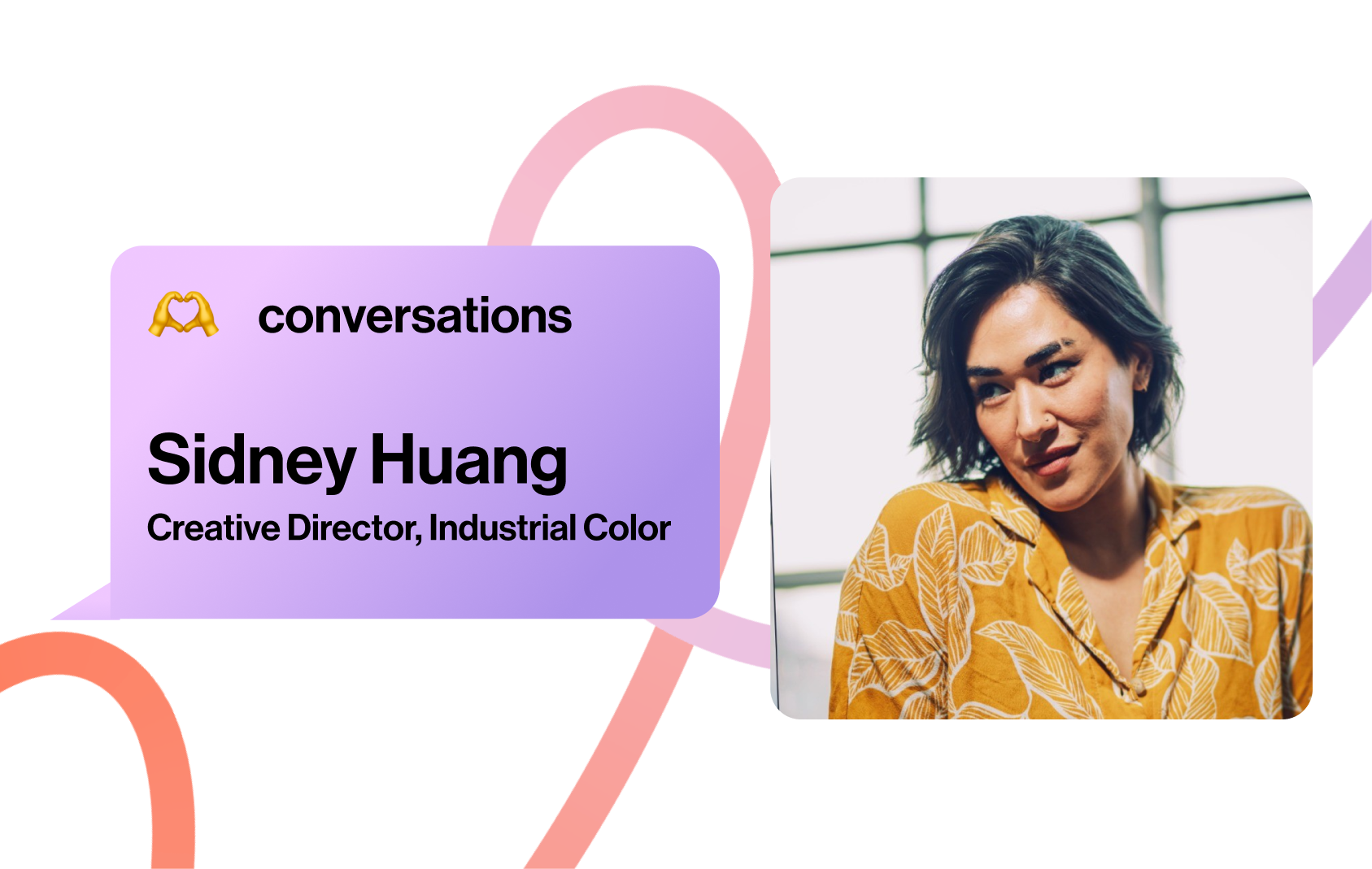Conversations: Hot Takes on the Creative Process

Talking to creatives & understanding their day-to-day processes drives everything we do here at Globaledit. We constantly find ourselves leaving casual conversations with clients, friends, and industry peers with ideas and soundbites that we love sharing with the rest of the team. It occurred to us that it would be fun to open up the forum and share some of these conversations with the Globaledit community!
To kick off the series, Merry Gu from the Globaledit team caught Sidney Huang, Creative Director at Industrial Color, between shots on set to chat about her creative process. Sid has directed projects for top brands including YSL Beauty and Puma, and always lights up a room. Keep reading and you’ll see what we mean.
Merry: Thanks for chatting today, Sidney! Let’s jump right in. What do you do, and what are you working on today?
Sidney: I’m the Creative Director at Industrial Color. Today, we’re shooting a digital campaign for a cult-favorite skincare brand. They’re releasing some new product and they wanted to elevate their content for the launch, so they came to us.
Speaking of new campaigns, when you’re approaching a new project, where do you start? How do you think about your creative strategy and collaborate with your team?
Our creative team is very collaborative, so usually when we get a brief, we’ll do a brainstorming session where everyone thinks on their own, then we’ll come up with some really good ideas together, pick them apart, and add to them. Then, whoever’s owning the project will take it and run with it. This creative process ensures no one’s stuck in a vacuum, which can feel really isolating and also stunts any type of growth or creativity. It’s always good to bounce ideas off of people whom you really trust and whose taste you respect.
What I always tell people—and this applies to literally any creative endeavor, even a home improvement project—is to push through the ugly phase. Because you’ll start and you’ll think, “This idea is perfect. I love it.” And then you’ll begin to build it out and you’ll think, “This is the worst idea I’ve ever had in my life, why am I doing this?” But if you push through that part, usually things start to make sense and you’ll come up with something really cool.
People are always talking about the next big thing, whether it’s a new tool or product or a certain aesthetic. What’s a hot take that you have about what’s next in the creative industry?
If you asked 100 people, you would get 100 different answers. I know everyone is really interested in, concerned with, and aware of what AI is going to do for the industry. In the short term, we think it’s a very sexy thing that’ll either greatly improve our jobs or replace us, and I think people are reacting to that feeling. I think in the long term, it’s going to create efficiencies for what we already do. I think that’s what we should really focus on.
Beyond AI, I’m personally really interested in where film is going, because I think that telling human stories is the highest expression of art—to really understand humans and relationships and what it is to be alive—so I try to inject that in everything that I’m doing, and I would like to take Industrial Color and our work in that direction as well.

What is something you always pay attention to as a creative that someone less creatively inclined might not?
Professionally, I’m constantly looking for and saving examples of things that I like to do, in terms of edit style, storytelling, lighting, and so on. That way, I can show a client, department, or team member to help them understand what I’m thinking, and I won’t have to ask people to trust me without visual examples.
Personally, I’m always looking for something that is left of center and unexpected, and I try to copy that. I used to be an actor, and my acting mentor would tell me that art is copying someone else—because when you copy something that you appreciate and that touches you, it goes through the filter of who you are, and you ultimately create something new because you’re adding to and evolving it. So, I’m constantly looking for things that are a little bit more earnest and real, and not what we expect people or things to be. I try to absorb that and then spit it out through my lens.
Merry Gu leads content marketing at Globaledit. Check out more of Sidney Huang and her team’s work at Industrial Color here.
